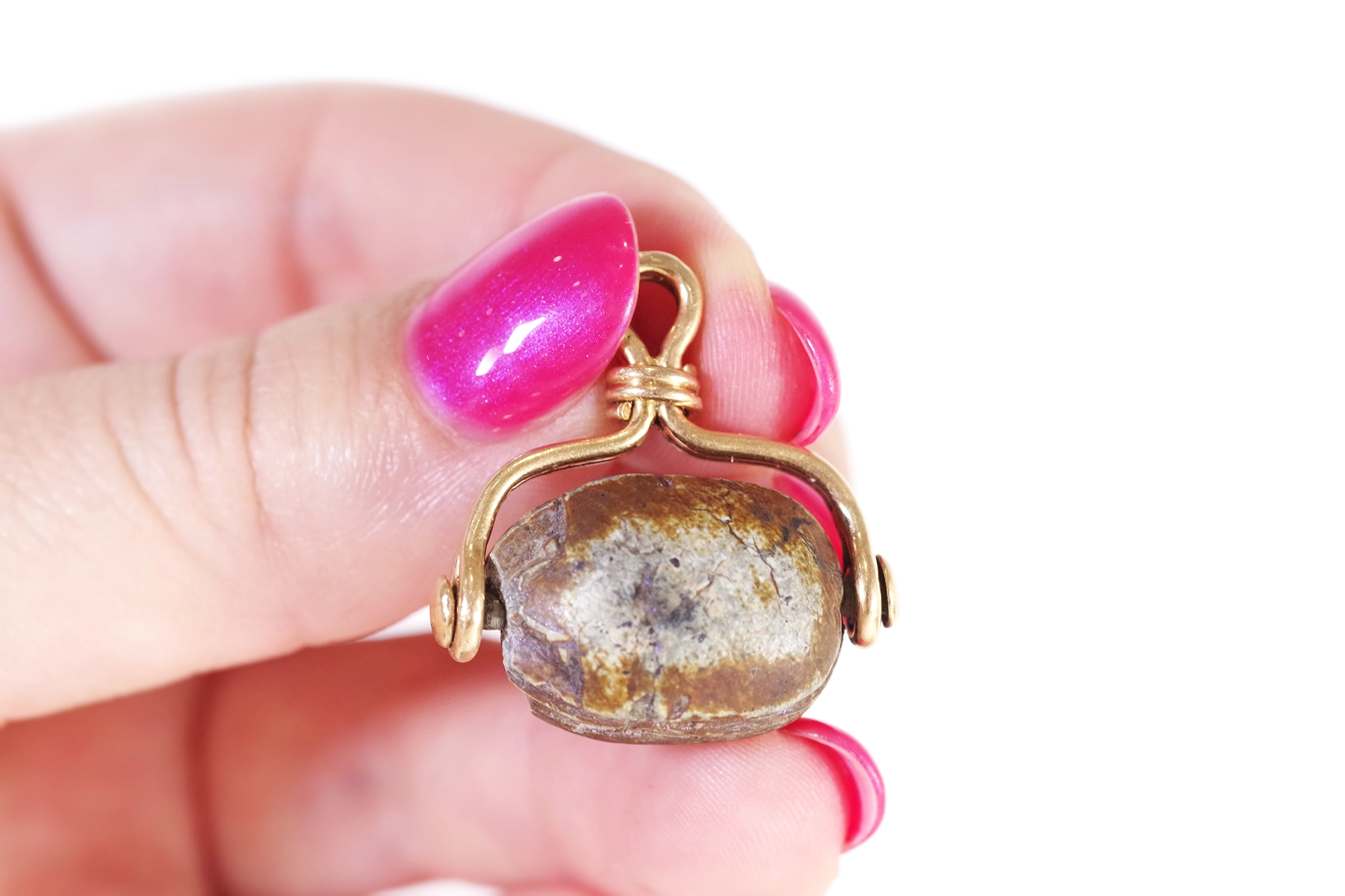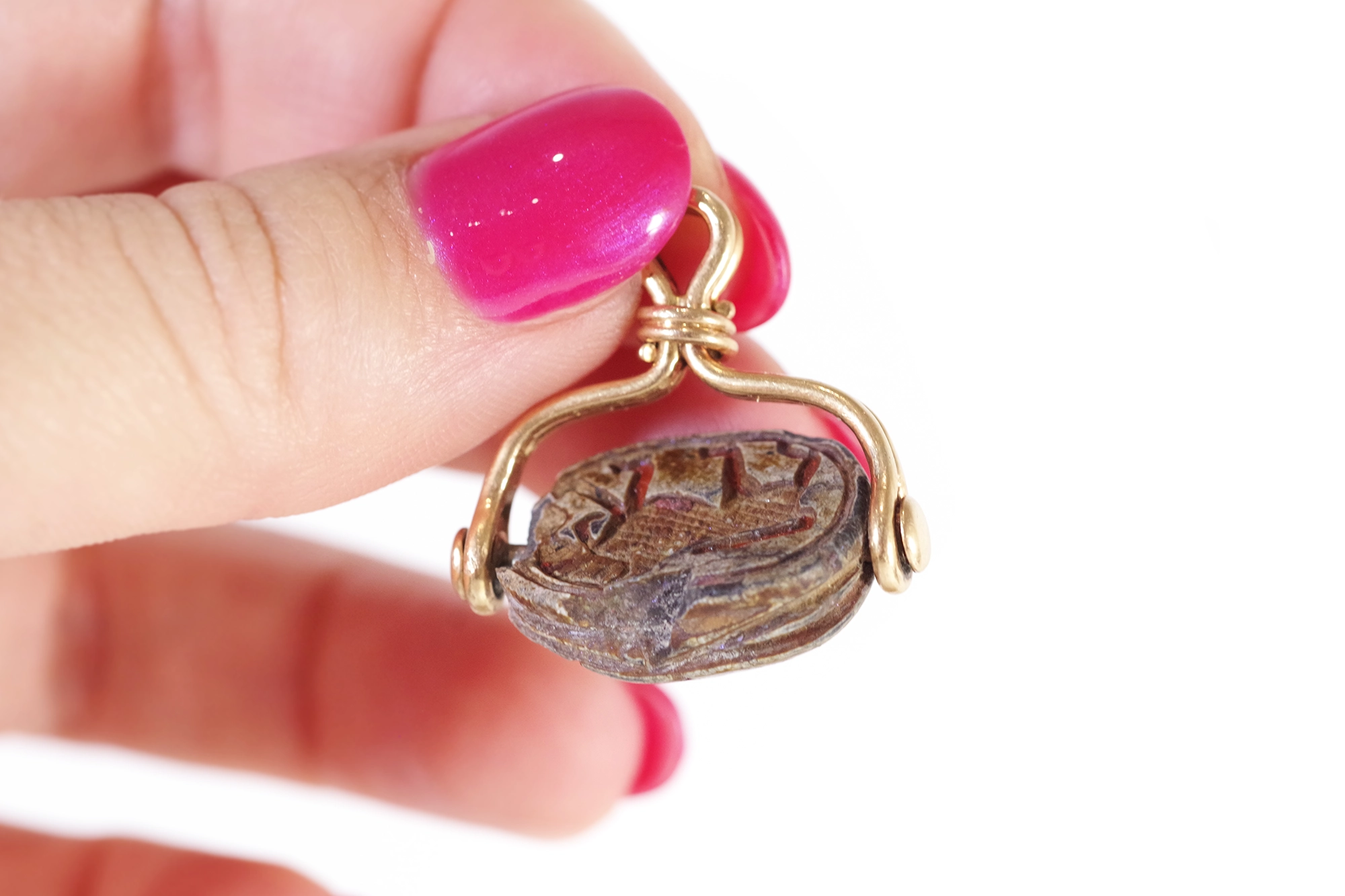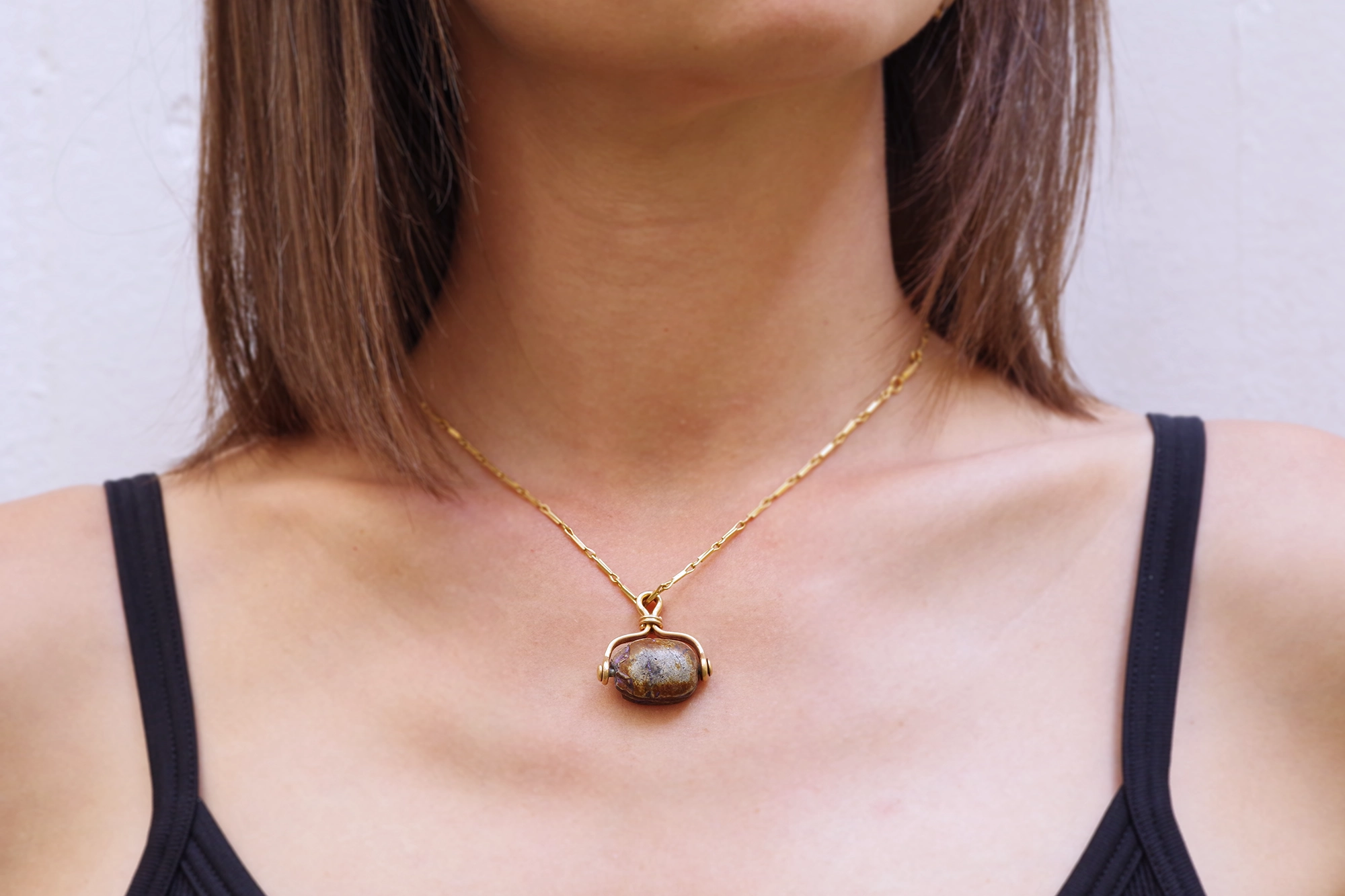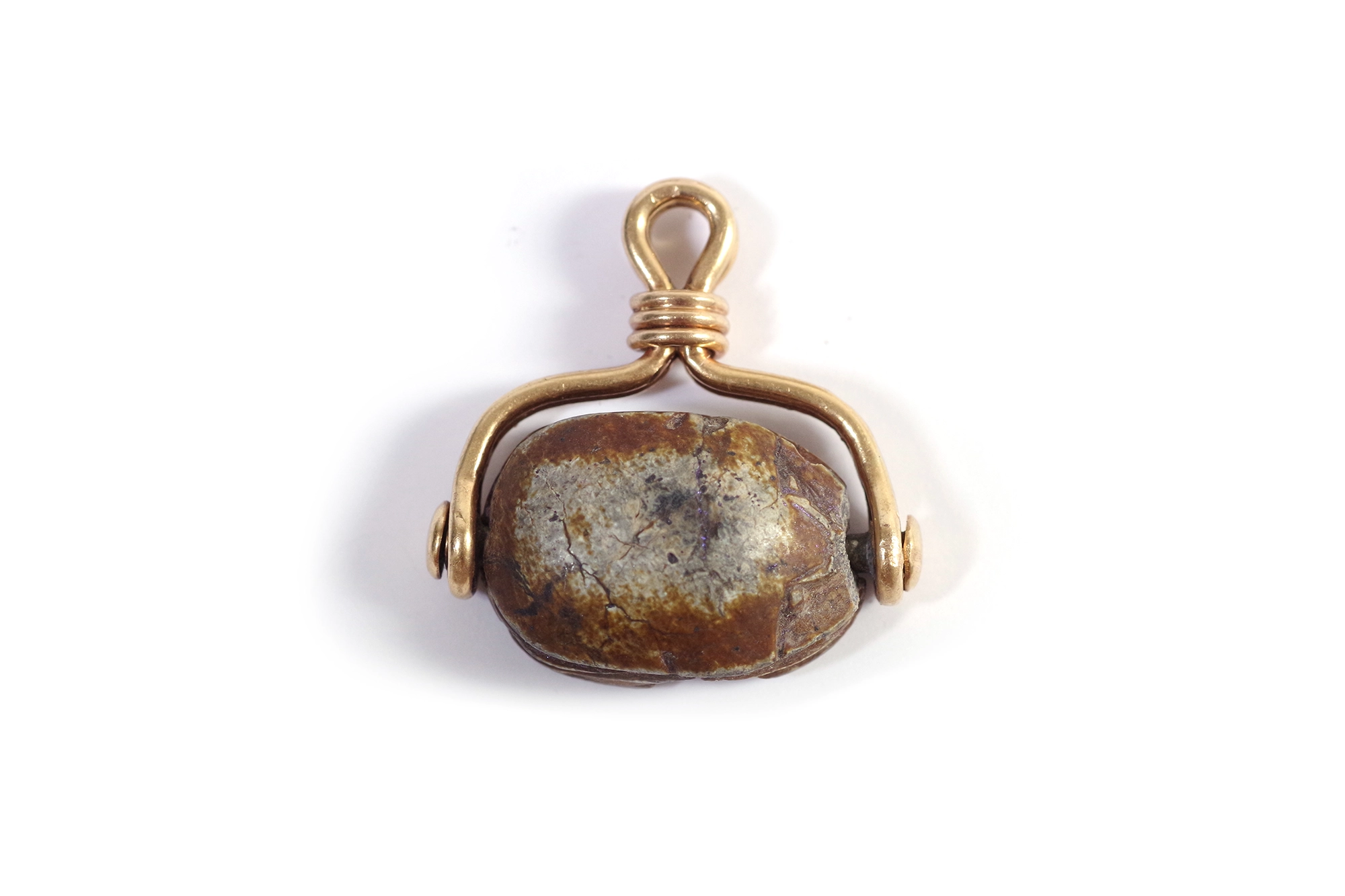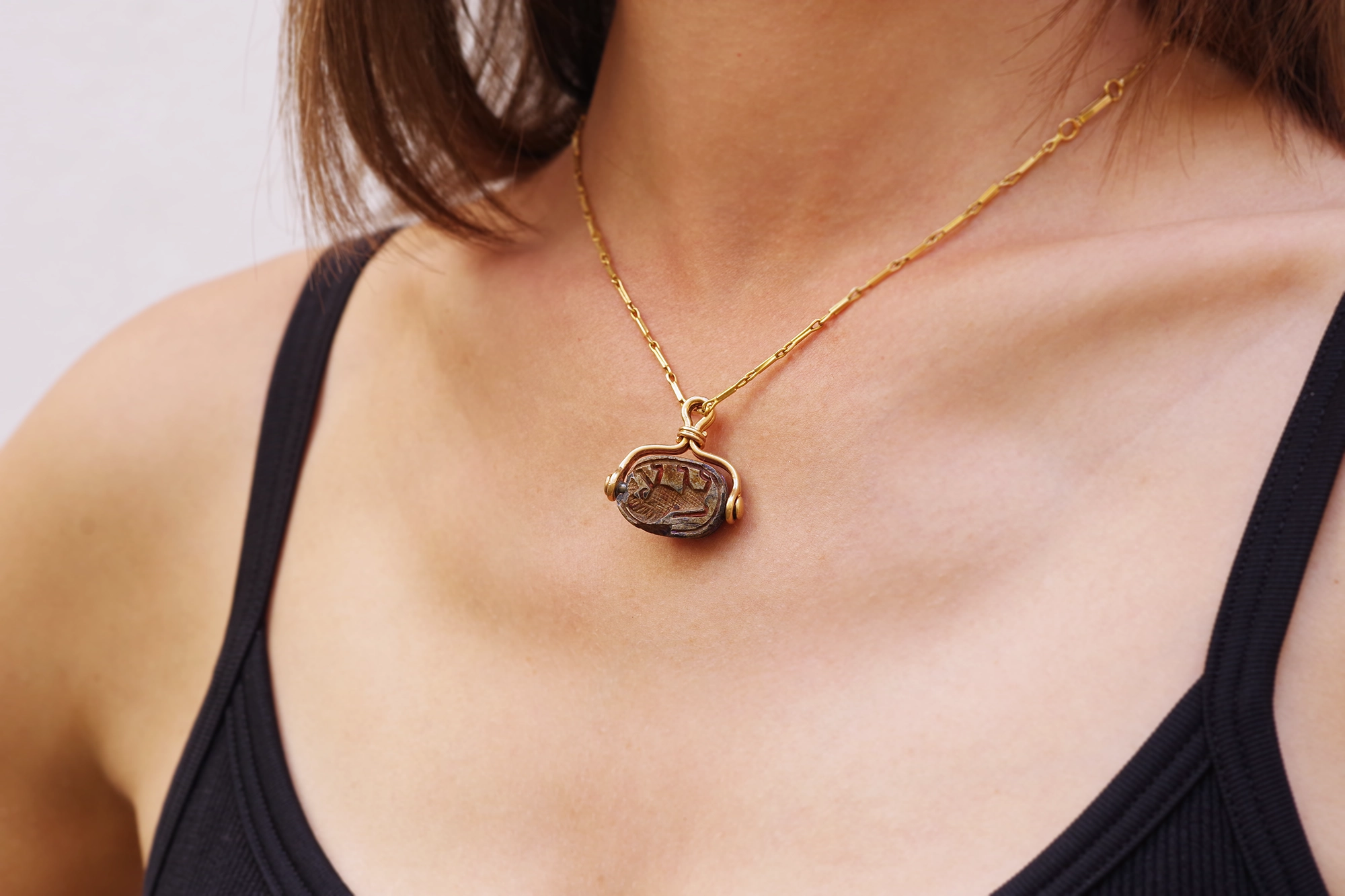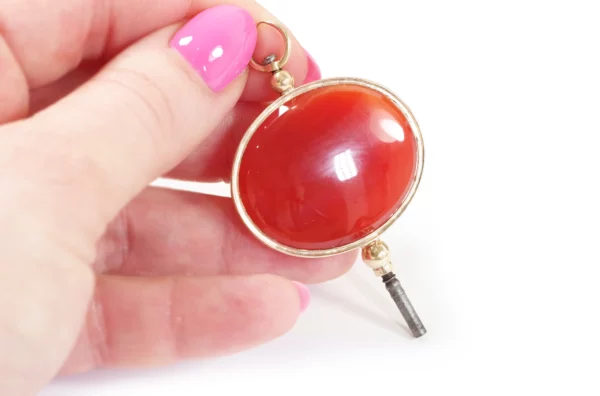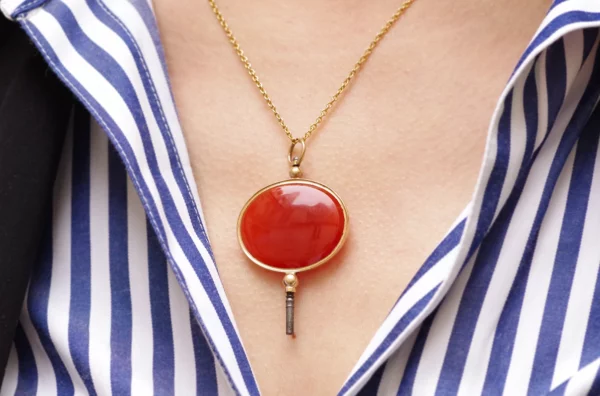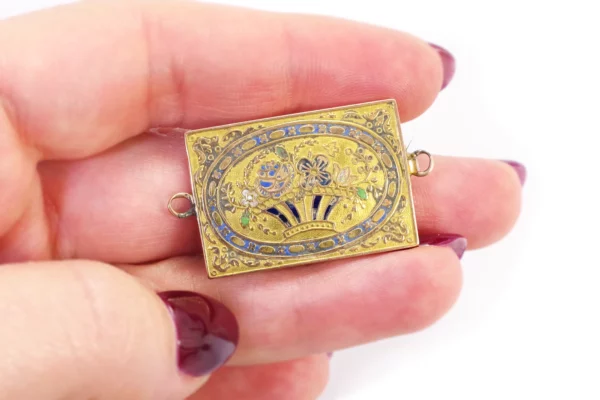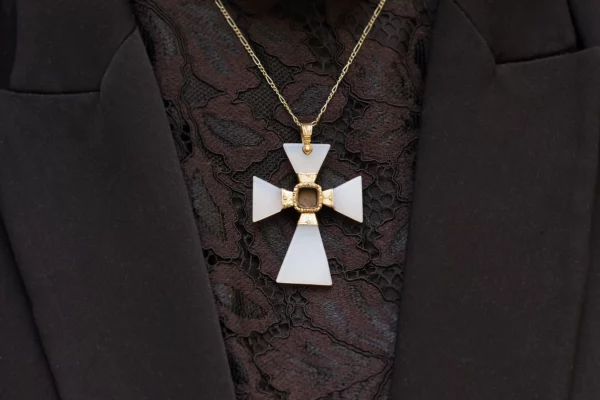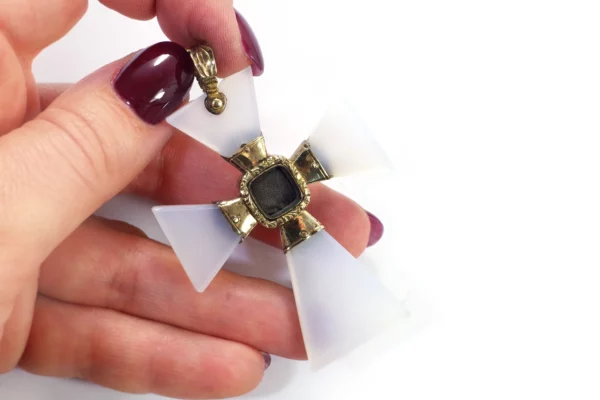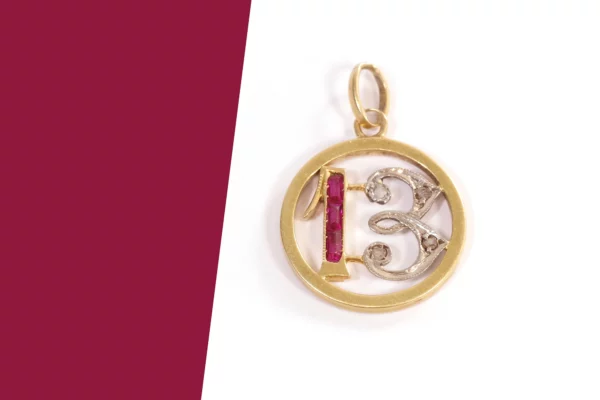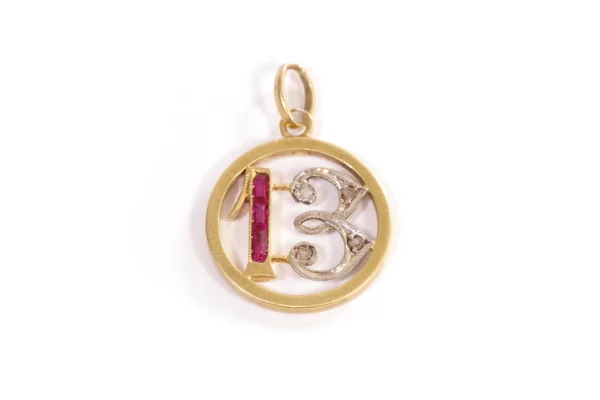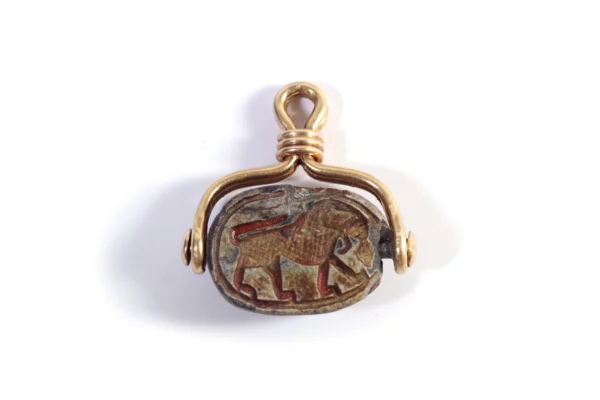Egyptian scarab pendant in 14 karat rose gold. Pendant featuring a steatite scarab mounted on a pivot, the reverse engraved with a lion walking to the right, tail over back. The lion already appears on early Middle Kingdom scarabs, but is particularly popular during the Second Intermediate Period and the New Kingdom. Pendant dating from the 13th to 15th dynasties, 1650-1550 B.C.; late 19th century gold mount.
Shell hallmark (french state hallmark for 14 karats)
Height: 26 mm
Width: 26 mm
Condition: wears and lacks on the stone
Weight : 7.78 gr
*The antique gold chain is not sold with the jewel*
See our antique chains



